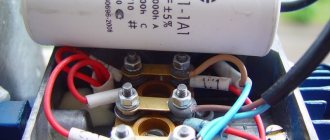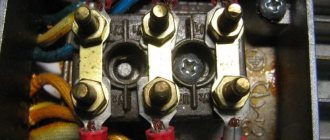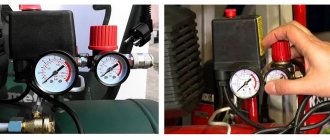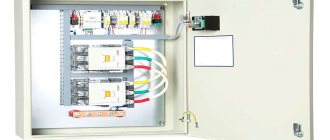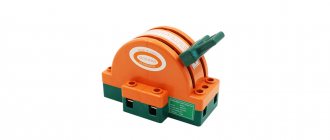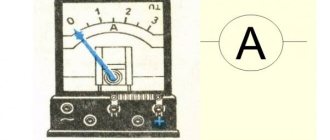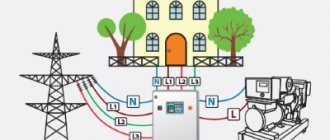An example of placing a capacitor on the outside of the motor housing Depending on the installation location and other operating conditions, the capacitors may be located on the outside of the motor next to the junction box. Unfortunately, this cannot be said about power, the losses of which reach significant values.
As workers, you can use paper, metallized or film analogues. But for this you need to have a good understanding of radio engineering. If during operation the motor overheats, it means that the capacity of the device is greater than required. Connecting capacitors (part 1) Also, sometimes another end can come out from half the winding.
If the latter lights up, it means that the two ends being tested belong to the same winding. This also requires a capacitor in working order.
If during operation the motor overheats, it means that the capacity of the device is greater than required. But how to do it right? It also depends on how you insert the plug into the socket. And an increase in current will lead to heating of the windings. Connecting a single-phase motor.
What is a capacitor
This is a device for storing electrical charge. It consists of a pair of conductive plates located at a small distance from each other and separated by a layer of insulating material.
The following types of electrical charge storage devices are widely used:
- Polar. They operate in circuits with constant voltage and are connected in accordance with the polarity indicated on them.
- Non-polar. They work in circuits with alternating voltage, you can connect them in any way you like
- Electrolytic. The plates are thin oxide films on a sheet of foil.
Non-polar capacitor
Electrolytic ones are better suited than others to serve as a capacitor for starting an electric motor.
Design and purpose of capacitors
This element of the electrical circuit consists of two plates (plates). The plates are positioned relative to each other so that there is a gap between them. When a capacitor is connected to an electric current circuit, charges accumulate on the plates. Due to the physical gap between the plates, the device has low conductivity.
Attention! This gap can be air or filled with a dielectric. The following dielectrics are used: paper, electrolyte, oxide films.
The main feature of such a two-terminal network is the ability to accumulate electric field energy and instantly transfer it to the load (charge and discharge).
Part device
The first prototype of the container was the Leyden jar, created in 1745 in the city of Leiden by the German von Kleist. The jar was lined with copper foil inside and out. This is how the idea of creating covers came about.
Leyden jars connected in parallel
The graphic designation of a two-terminal network on diagrams and drawings is two vertically located lines (like plates) with a gap between them.
Designation on diagrams
Description of types of capacitors
Various types of electric motors correspond to drives that are suitable for their characteristics.
So, for low-frequency high-voltage (50 hertz, 220-600 volts) motors, an electrolytic capacitor is well suited. Such devices have a high capacity, reaching up to 100 thousand microfarads. It is necessary to carefully monitor the polarity, otherwise a fire may occur due to overheating of the plates.
Non-polar drives do not have such restrictions, but they cost several times more.
Different types of capacitors
In addition to those listed above, vacuum, gas, and liquid devices are also produced, but they are not used as a starting or running capacitor in an electric motor connection circuit.
Selection of capacity
In order to maximize the efficiency of the electric motor, it is necessary to calculate a number of parameters of the electrical circuit, and above all the capacitance.
For run capacitor
There are complex and accurate calculation methods, but at home it is enough to estimate the parameter using an approximate formula.
For every 100 watts of electrical power of a three-phase electric motor, there should be 7 microfarads.
It is also unacceptable to apply voltage to the phase stator winding that exceeds the rated voltage.
For starting capacitor
If the electric motor must be started when there is a high load on the drive shaft, then the running capacitor will not cope, and a starting capacitor will need to be connected during startup. After reaching operating speed, which happens on average in 2-3 seconds, it is turned off manually or by an automatic device. Special buttons for turning on electrical equipment are available that automatically open one of the circuits after a specified delay time.
It is unacceptable to leave the startup drive connected in operating mode. Phase imbalance of currents can lead to overheating and fire of the motor. When determining the capacity of the starting device, it should be 2-3 times higher than that of the worker. In this case, when starting, the torque of the electric motor reaches its maximum value, and after overcoming the inertia of the mechanism and gaining speed, it decreases to the nominal value.
To set the required capacitance, the capacitors for starting the electric motor are connected in parallel. The capacity is summed up.
Announcements on NN.RU - Construction
Milan kitchen table new with free delivery to your doorstep in the city of Nizhny Novgorod Dzerzhinsk. Size: 1154*752*756 mm frame: legs. Price: 4,500 rub.
OPGS in bags and in bulk! Seven days a week! Delivery throughout the city and region! Any form of payment! Price: 1,350 rub.
Set of kitchen corner table stools new free delivery within the city of Nizhny Novgorod Dastorg factory offers - kitchen corners with. Price: 8,050 rub.
I will deliver a new ash orchid set for free around the city of Nizhny Novgorod, Dzerzhinsk. There are other colors and models from RUB 5,000 on sale. Price: 7,500 rub.
There is a real construction boom in Nizhny Novgorod. In every district of the city, new houses are appearing that will be rented out in the coming years.
Simple ways to connect an electric motor
The easiest way to connect a three-phase electric motor to a household electrical network is to use a frequency converter. Power losses will be minimal, but such a device often costs more than the engine itself.
A frequency converter will only become cost-effective if there is a large volume of equipment used.
Another method uses the winding of the asynchronous electric motor itself to convert the supply voltage. The scheme will turn out to be bulky and massive . The capacitor for starting the electric motor is connected according to one of two popular schemes
- triangle;
- star.
Connecting the motor according to the star and delta circuits
When implementing connections using these methods, it is important to minimize power losses.
Delta connection diagram
The circuit is quite simple; to make it easier to understand, we will designate the motor contacts with the symbols A - zero, B - working and C - phase
The power cord is connected with a brown conductor to pin A, and one of the capacitor leads should also be connected there. The second terminal of the device is connected to pin I, and the blue conductor of the power cord is connected to pin C.
In the case of a small electric motor power, not exceeding 1.5 kilowatts, it is permissible to connect only one capacitor; a starting capacitor is not needed.
If the power is higher and the load on the shaft is significant, then two devices connected in parallel are used.
Star connection diagram
If there are 6 terminals on the electric motor terminal block, you should ring them separately and determine which terminals are connected to each other. In the motor passport you need to find the purpose of the pins. After this, the circuit is reconnected, forming the usual “triangle”.
For this purpose, the jumpers are removed and the contacts are assigned symbols from A to F. Next, the contacts are connected in series: A and D, B and E, C and F.
Now contacts D, E and F will become the neutral, working and phase wires, respectively. The capacitor is connected to them in exactly the same way as in the previous case.
When you turn it on for the first time, you need to carefully ensure that the windings do not overheat. In this case, you should immediately turn off the device and determine the cause of overheating.
Connecting a single-phase motor
As a rule, our houses, garages and other outbuildings are connected to a 220V source, which is a single-phase network. In this regard, all consumers are designed to operate from a single-phase network made with two wires, one of which is neutral and the other phase. The operation of many electrical appliances involves single-phase electric motors, the connection of which involves some subtleties.
Operating voltage
After capacitance, voltage is the most important parameter. If you take too much voltage margin, the dimensions, weight and price of the entire device will increase significantly. Even worse is to take devices that do not have enough operating voltage. Such use will lead to their rapid wear, failure, and breakdown. This may cause a fire or even an explosion.
The optimal voltage margin is 15-20%.
Important! For paper dielectric capacitors in alternating voltage circuits, the nominal voltage specified for direct current must be divided by 3.
If 600 volts is indicated, then such capacitors can be safely used in AC circuits up to 300 volts.
Features of the circuit with capacitors
The windings of all three-phase electric motors can be connected according to two schemes:
- “Star” - in this case, the ends of all windings are connected at one point. And the beginnings of the windings are connected to the supply network.
- “Triangle” - the beginning of the winding is connected to the end of the adjacent one. The result is that the connection points of the two windings are connected to the power supply.
The choice of circuit depends on what voltage the motor is supplied with. Typically, when connected to a 380 V AC network, the windings are connected in a “star”, and when operating under a voltage of 220 V - in a “delta”.
In the picture above:
a) star connection diagram;
b) triangle connection diagram.
Since a single-phase network clearly lacks one supply wire, it needs to be made artificially. For this purpose, capacitors are used that shift the phase by 120 degrees. These are working capacitors; they are not enough when starting electric motors with a power of over 1500 W. To start powerful engines, you will need to additionally include another container, which will facilitate work during the start.
Using Electrolytic Capacitors
Capacitors with a dielectric made of paper are characterized by a low specific capacitance and significant dimensions. For an engine of even not the highest power, they will take up a lot of space. Theoretically, they can be replaced by electrolytic ones, which have several times higher specific capacity.
Types of electrolytic capacitor devices
To do this, the electrical circuit will have to be supplemented with several elements: diodes and resistors. This option is not bad for an occasionally running engine. If long-term loads are planned, then it is better to abandon saving space and weight - if the diode accidentally fails, it will begin to pass alternating current to the drive, which will lead to its breakdown and explosion.
The solution can be polypropylene capacitors with metal coating of the SVV series, designed for use as starting capacitors.
How to choose a capacitor for a three-phase electric motor
To calculate the capacitance of the main capacitor, use the formula:
C = (k×Iφ)/U
Where
- k-coefficient taken as 4800 for the “triangle” circuit and 2800 for the “star” circuit;
- Iφ is the stator current, it is taken from the passport or plate on the case;
- U is the network voltage.
Three-phase electric motor
The result is obtained in microfarads. Instead of an exact formula, you can apply the rule: for every 100 watts of power - 7 microfarads of capacity.
If, at start-up, the engine has to overcome a large moment of inertia of the equipment connected to the shaft, then a starting capacitor is connected to help the main one during start-up and at the set rated speed.
The capacity of the starting storage device is 2-3 times larger than the main one.
Connecting a three-phase electric motor to the network
After entering the mode, it must be turned off - manually or using automation. If there is no device exactly suitable for the calculated capacitance, the capacitors can be connected in parallel.
Characteristics
The voltage created on the plates of a two-terminal network is equal to the potential difference:
Knowing the voltage and charge, you can calculate the capacitance (C). This is one of the main characteristics of a two-terminal network:
Where:
- C – capacitance, F (farad);
- q – charge accumulated by a two-terminal network, C (coulomb);
- U – voltage, V.
Electrical capacity is a physical quantity that is determined by dividing the plate charge by the potential difference between the plates. The unit of measurement for C is farad (F).
For your information. A capacitance equal to 1 F is a large value, so in practice it is measured: in microfarads (μF), picofarads (pF), nanofarads (nF).
Other parameters of the two-terminal network include:
- energy density;
- Rated voltage;
- polarity.
How to choose a starting capacitor for a single-phase electric motor
Before use in the starting circuit, the capacitor is checked for serviceability with a tester. When selecting a working capacitor, you can apply the same approximate rule of a-7 microfarads per 100 watts of rated electrical power. The starting capacity is also taken 2-3 times higher.
When selecting a 220-volt capacitor, you should choose models with a rating of at least 400. This is explained by transient electromagnetic processes during startup, which give short-term inrush voltage surges of up to 350-550 volts.
Single-phase asynchronous electric motors are often used in household electrical appliances and power tools. To start such devices, especially under load, a starting winding and a phase shift are required. For this, a capacitor is used, connected according to one of the known circuits.
Design of an asynchronous single-phase electric motor
If the start is carried out with overcoming a large moment of inertia, connect a starting capacitor.
Connecting an electric motor with your own hands
How to choose a capacitor for a single-phase motor is already clear. The selection of capacitors for a three-phase motor is considered. How to practically mount a circuit to start an engine, what is necessary for this?
The circuit consists of the following components:
- engine (up to 3 kW);
- capacitors: starting and running, which differ in capacity;
- 220 V PVS start button.
Why do you need a start button? For short-term connection of an electrolytic two-terminal network and starting the motor rotation. The circuit is assembled according to the diagram in the picture below. All connections are made using bolted clamps. Bare sections of wires are subject to mandatory insulation.
The use of starting and operating capacitors makes it possible to start motors in any circuit. The capacity of the two-terminal circuits should be sufficient to start rotation and stable operation under load. It is preferable to use new parts.
Why is a single-phase electric motor started through a capacitor?
The stator of an electric motor with a single winding, when passing alternating current, will not be able to start rotating, but will only begin to tremble. To start rotation, a starting winding is placed perpendicular to the main winding. A phase shifting component such as a capacitor is included in this winding circuit. The electromagnetic fields of these two windings, applied to the rotor with a phase shift, will ensure the start of rotation.
In a three-phase motor, the windings are already placed at angles of 120°. The electromagnetic fields they induced in the rotor are oriented accordingly. To start rotation, it is enough to ensure a phase shift in their operation to ensure starting torque.
Asynchronous motors and their features
Motors powered by alternating current are devices whose main task is to convert electrical current into mechanical energy that promotes the rotation of motor elements. During operation, single-phase 220V units use alternating current, which in most cases comes from the mains, less often from an electric generator.
General purpose AC motors, also known as induction motors, are electric motors that use a rotating magnetic field to generate torque to drive conveyors and machine tools. AC HVAC motors are used in equipment such as fans, blowers, air conditioners, heaters and compressor units. AC pump motors move the impeller in the pump assembly and are used in pumping systems for pumping water and other liquids. Application-specific AC motors have mechanical characteristics designed for specific purposes or applications.
